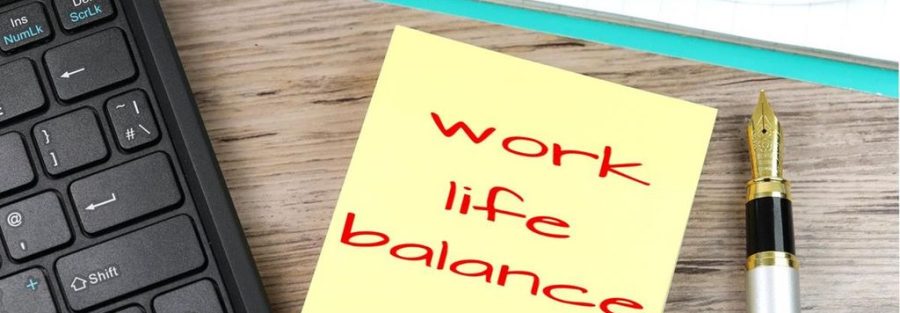Mastering Work-Life Balance: Strategies for Success
In today’s fast-paced world, achieving a harmonious work-life balance seems like a Herculean task. With the demands of a 24/7 workplace, the blur between professional and personal life has never been more pronounced. Yet, the quest for work-life balance is not just a trendy buzzword but a crucial aspect of our well-being. This balance is essential for maintaining mental health, fostering productivity, and achieving personal fulfillment.
Key Takeaways
- Setting clear boundaries between work and personal life is essential for reducing stress and maintaining focus.
- Effective time management strategies, such as prioritizing tasks and delegating responsibilities, can enhance productivity.
- Self-care and mindfulness practices are crucial for maintaining both physical and mental health.
- Leveraging support systems, including professional help and workplace resources, can aid in achieving a balanced life.
- Continuous self-assessment and adjustment of strategies are necessary for sustaining long-term work-life balance.
Understanding the Importance of Work-Life Balance
Achieving a harmonious work-life balance is crucial for both employees and employers. A healthy balance can lead to many great benefits, including fewer health problems and increased overall well-being. This balance is essential for maintaining mental health, fostering productivity, and ensuring personal fulfillment.
Setting Boundaries Between Work and Personal Life
Creating Physical and Mental Separation
In today’s digitally connected world, establishing clear boundaries between work and personal life is crucial. Designate a specific workspace to help create a mental distinction between professional and personal activities. This separation can enhance focus during work hours and promote relaxation during personal time.
Communicating Your Limits
Effectively communicating your boundaries to colleagues, supervisors, and family members is essential. Clearly state your work hours and availability, ensuring everyone understands and respects your limits. This practice not only helps in managing expectations but also reduces stress and fosters a healthier work-life balance.
Utilizing Technology Wisely
Leverage technology to support your boundaries rather than blur them. Turn off work-related notifications after hours and use apps that help manage your time efficiently. By doing so, you can ensure that your personal time remains uninterrupted and dedicated to relaxation and personal pursuits.
Setting boundaries is about prioritizing your well-being and ensuring that work does not overshadow your personal life. It requires consistent effort and clear communication to maintain a healthy balance.
Effective Time Management Strategies
Prioritizing Tasks
Effective time management begins with prioritizing tasks. Start by identifying your most important responsibilities and allocate your time accordingly. Use tools like calendars and to-do lists to plan your week, ensuring you have a clear view of your commitments. This approach helps you manage both personal and professional responsibilities efficiently.
Delegating Responsibilities
Delegating responsibilities is crucial for enhancing efficiency and reducing stress. Identify tasks that can be handled by others and assign them accordingly. This not only frees up your time but also empowers your team members, fostering a collaborative work environment.
Incorporating Breaks and Downtime
Incorporating regular breaks and downtime into your schedule is essential for maintaining productivity and mental well-being. Short breaks during work hours can help you recharge and stay focused. Additionally, ensure you have time for leisure activities and self-care outside of work to maintain a healthy work-life balance.
Remember, effective time management is not just about working harder, but working smarter. By prioritizing tasks, delegating responsibilities, and incorporating breaks, you can achieve a more balanced and fulfilling life.
Self-Care and Mindfulness Practices

Daily Self-Care Routines
Incorporating daily self-care routines is essential for maintaining overall well-being. Prioritize activities that nurture your physical, mental, and emotional health. This can include regular exercise, adequate sleep, and healthy meals. Additionally, make time for hobbies, relaxation, and socializing to ensure a balanced lifestyle.
Mindfulness Techniques
Practicing mindfulness and living in the present moment can help reduce stress levels and promote emotional well-being. Take deep breaths, focus on your surroundings, and engage fully in whatever you are doing. This approach can help reduce feelings of being overwhelmed and promote a healthier lifestyle.
Balancing Physical and Mental Health
Balancing physical and mental health is crucial for achieving work-life balance. Engage in activities that promote both aspects, such as yoga, meditation, and regular physical exercise. Remember that taking care of yourself enables you to perform at your best in all aspects of life.
Embracing mindfulness and breaks throughout your day can significantly improve your overall well-being. It’s a continuous journey of planning, reflection, and adjustment.
By integrating these practices into your daily routine, you can enhance your health outcomes, especially for marginalized people, and achieve a more fulfilling work-life balance.
Overcoming Common Challenges
Identifying Work-Related Stressors
Understanding the root causes of stress in the workplace is crucial. Reflect on your own experiences and identify specific stressors that impact your productivity and well-being. This could include tight deadlines, lack of support, or unclear expectations. Once identified, you can develop strategies to mitigate these stressors effectively.
Managing Family and Social Obligations
Balancing work with family and social commitments can be challenging. Create a schedule that allocates time for both professional and personal responsibilities. Prioritize tasks and communicate your availability to family and friends to ensure everyone is on the same page. This approach helps in maintaining harmony between work and personal life.
Adapting to Changing Circumstances
Flexibility is key when dealing with unexpected changes. Whether it’s a sudden increase in workload or personal emergencies, being adaptable can help you manage these situations better. Develop a contingency plan and stay open to adjusting your strategies as needed. This will enable you to maintain a balanced life even during turbulent times.
Overcoming common challenges requires a proactive approach and a willingness to adapt. By identifying stressors, managing obligations, and staying flexible, you can achieve a more balanced and fulfilling life.
Leveraging Support Systems
Seeking Professional Help
Seeking support isn’t a sign of weakness; it’s a strategy for success. Building a support system within your team can greatly lighten your workload and reduce stress. It’s about creating a collaborative environment where everyone feels valued and empowered. By focusing on team strengths and fostering mutual support, you’re setting the stage for personal and professional fulfillment, crafting a path toward a healthier work-life balance.
Building a Supportive Network
- Team Dynamics: Leverage team insights for a better understanding of diverse strengths within the workplace.
- Open Communication: Foster a culture of open communication within teams, seeking mentorship and collaboration to share workloads and insights.
Utilizing Workplace Resources
Building on the foundation of leveraging team strengths, it’s equally important to embrace external resources for delegating tasks and seeking support to enhance your work-life balance.
Here are ways to effectively leverage external resources:
- Outsource responsibilities like household chores or administrative duties to alleviate stress.
- Engage professionals such as babysitters or meal delivery services for managing daily tasks efficiently.
Embracing external resources can significantly reduce your stress levels and free up time for personal and professional growth.
Continuous Improvement and Reflection
Regular Self-Assessment
Work-life balance is not a static achievement but an ongoing process. Regularly evaluate your current situation to identify areas for improvement. This can help you stay aligned with your evolving priorities and goals.
Adjusting Strategies as Needed
Life is dynamic, and so are your personal and professional circumstances. Be prepared to adjust your strategies as needed. Flexibility is key to maintaining a healthy work-life balance.
Celebrating Small Wins
Don’t forget to celebrate your progress, no matter how small. Recognizing and celebrating small wins can boost your motivation and help you stay committed to your work-life balance goals.
Continuous improvement requires regular reflection and a willingness to adapt. Stay flexible and open to change to maintain a balanced life.
Conclusion
Mastering work-life balance is an ongoing journey that requires dedication, reflection, and adaptability. By prioritizing your time, setting clear boundaries, and leveraging practical strategies, you can create a harmonious blend of professional success and personal fulfillment. Remember, achieving balance is not about perfection but about making consistent efforts to enhance your overall quality of life. Implementing these strategies will not only improve your mental health and productivity but also lead to a more satisfying and well-rounded life. Stay committed to your well-being, and you’ll find that a fulfilling work-life balance is within reach.
Frequently Asked Questions
What is work-life balance and why is it important?
Work-life balance refers to the equilibrium between professional responsibilities and personal life. It’s important because it helps maintain mental health, boosts productivity, and fosters personal fulfillment.
How can I set boundaries between work and personal life?
Setting boundaries involves creating physical and mental separation, communicating your limits, and utilizing technology wisely to prevent work from encroaching on personal time.
What are some effective time management strategies for achieving work-life balance?
Effective time management strategies include prioritizing tasks, delegating responsibilities, and incorporating breaks and downtime into your schedule to avoid burnout.
How can self-care and mindfulness practices improve my work-life balance?
Daily self-care routines and mindfulness techniques can help you manage stress, improve mental clarity, and maintain a balance between physical and mental health.
What are common challenges in achieving work-life balance and how can I overcome them?
Common challenges include work-related stressors, managing family and social obligations, and adapting to changing circumstances. Overcoming these challenges involves identifying stressors, seeking support, and being flexible with your strategies.
How can I leverage support systems to improve my work-life balance?
Leveraging support systems involves seeking professional help, building a supportive network, and utilizing workplace resources to create a balanced and fulfilling life.




4 Comments
thefriskys
Somebody essentially lend a hand to make significantly articles Id state That is the very first time I frequented your website page and up to now I surprised with the research you made to make this actual submit amazing Wonderful task
admin
Thank you for the compliment 🙂
Warm regards,
Shawn
exploreuaeonline
Hi my loved one I wish to say that this post is amazing nice written and include approximately all vital infos Id like to peer more posts like this
admin
Thank you and got it, be looking out for more articles on work life balance and how to better take care of ourselves.